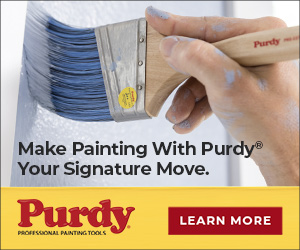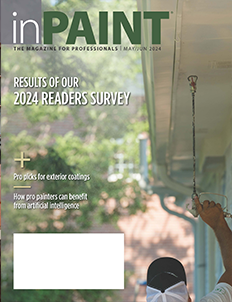Pitfalls of estimating
 Whether you’re an experienced estimator, a new recruit, or you’ve been a painter all your life that just knows what it takes to paint a structure, we all make estimating mistakes. It’s rare when we get to celebrate the perfect job. My sales team always looks at me funny when I celebrate the perfect 15% net profit we aim for—but we all moan at the losses, and get quite proud over the 30+ percenters.
Whether you’re an experienced estimator, a new recruit, or you’ve been a painter all your life that just knows what it takes to paint a structure, we all make estimating mistakes. It’s rare when we get to celebrate the perfect job. My sales team always looks at me funny when I celebrate the perfect 15% net profit we aim for—but we all moan at the losses, and get quite proud over the 30+ percenters.
The key to hitting those positive numbers and celebrations is a good estimating system.
THE UPSIDE OF A SYSTEM
A good estimating system reduces errors and losses, is repeatable by any estimator, and develops trustworthy pricing. It can also have field operations advantages such as a job budget for hours and paint quantities, from which you can develop production rates and material coverage rates.
The PDCA has studied estimating for decades and advocates the Developed Area Pricing Method for both large and small contractors. This method includes:
1. Identifying all items and surfaces to be protected, prepared or finished
2. Measuring all surfaces or counting all items to be finished
3. Calculating the labor cost to perform the job
4. Calculating the cost of materials to perform the job
5. Identifying and calculating additional job costs such as special insurance, bonds, subcontracted work, equipment, etc.
6. Adding proper overhead costs
7. Adding the desired profit
It may sound like a lot of work to set up, but the investment increases the chances for consistent profit, and then confidence in your estimating system, which makes you the expert in front of your customers.
COMMON PITFALLS
No matter if you use a digital or paper estimating process, there are always simple mistakes that can cost you. Here are a few I’ve fallen victim to over the years:
• Missing items from scope of work (which is really a sales issue in repaint)
• Misreading or relying on incomplete plans and specifications
• Wrong measurements or ballparking too liberally
• Bad math; especially not double-checking totals
• And the most common: improper assessment of surface prep
Avoiding these common pitfalls mostly takes discipline. Take your time, be thorough, and be thoughtful. It may take a bit more time but it can save you both time and money in the end.
_______________________________________________________________________________________________
 Randy Fornoff is the president of MTS Painting, a family owned and operated business based in Mesa, AZ specializing in repaints. He is the current president of the PDCA Residential Forum, the past president of the PDCA Arizona Council, and the current EPA LRRP training manager of the PDCA Arizona Council. He also presents PDCA Contractor
Randy Fornoff is the president of MTS Painting, a family owned and operated business based in Mesa, AZ specializing in repaints. He is the current president of the PDCA Residential Forum, the past president of the PDCA Arizona Council, and the current EPA LRRP training manager of the PDCA Arizona Council. He also presents PDCA Contractor
College business courses, webinars, and podcasts to help owners and managers in their quest for personal and business improvements.




